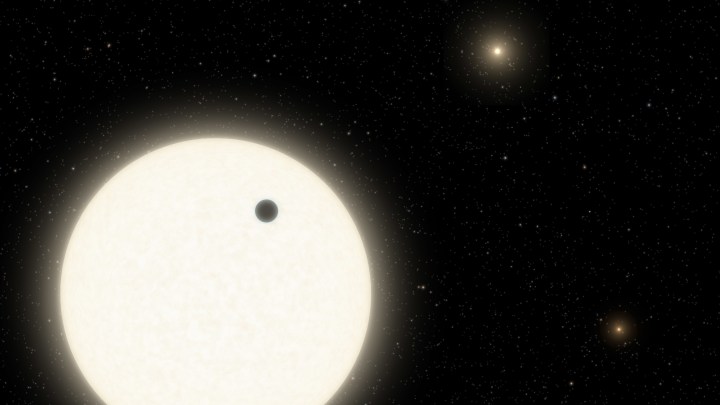
The oddities in our universe are many, and new research has thrown light on one such strange star system discovered more than a decade ago. Researchers have found a planet with three suns and an unusual kink in its orbit.
Planet KOI-5Ab was discovered all the way back in 2009, as just the second candidate discovered by NASA’s then-new Kepler mission. But no one paid much attention to this particular world as Kepler continued to discover new and exciting planets.
But there’s some value in looking back into the past for things that others have overlooked, as the team from NASA’s Exoplanet Science Institute discovered. Chief scientist David Ciardi poked back through the available data on KOI-5Ab from various different telescopes and discovered that it was well worth a second look.
“KOI-5Ab got abandoned because it was complicated, and we had thousands of candidates,” said Ciardi in a statement. “There were easier pickings than KOI-5Ab, and we were learning something new from Kepler every day, so that KOI-5 was mostly forgotten.”
KOI-5Ab’s most notable feature is that it is part of a triple star system, meaning it orbits a star that is in an orbital pattern with two other stars. The elaborate dance of the three stars and the planet is a rare thing to find already, and this system is even more unusual because the planet’s orbit is tilted at an angle.

“We don’t know of many planets that exist in triple-star systems, and this one is extra special because its orbit is skewed,” said Ciardi. “We still have a lot of questions about how and when planets can form in multiple-star systems and how their properties compare to planets in single-star systems. By studying this system in greater detail, perhaps we can gain insight into how the universe makes planets.”
The tilt of the planet suggests that it and the stars in the system may not have formed from the same disk of gas and dust, as is typical. The current theory to explain the planet’s tilt is that one of the other stars interfered with the planet’s orbit, its gravity kicking the planet into a different plane.



